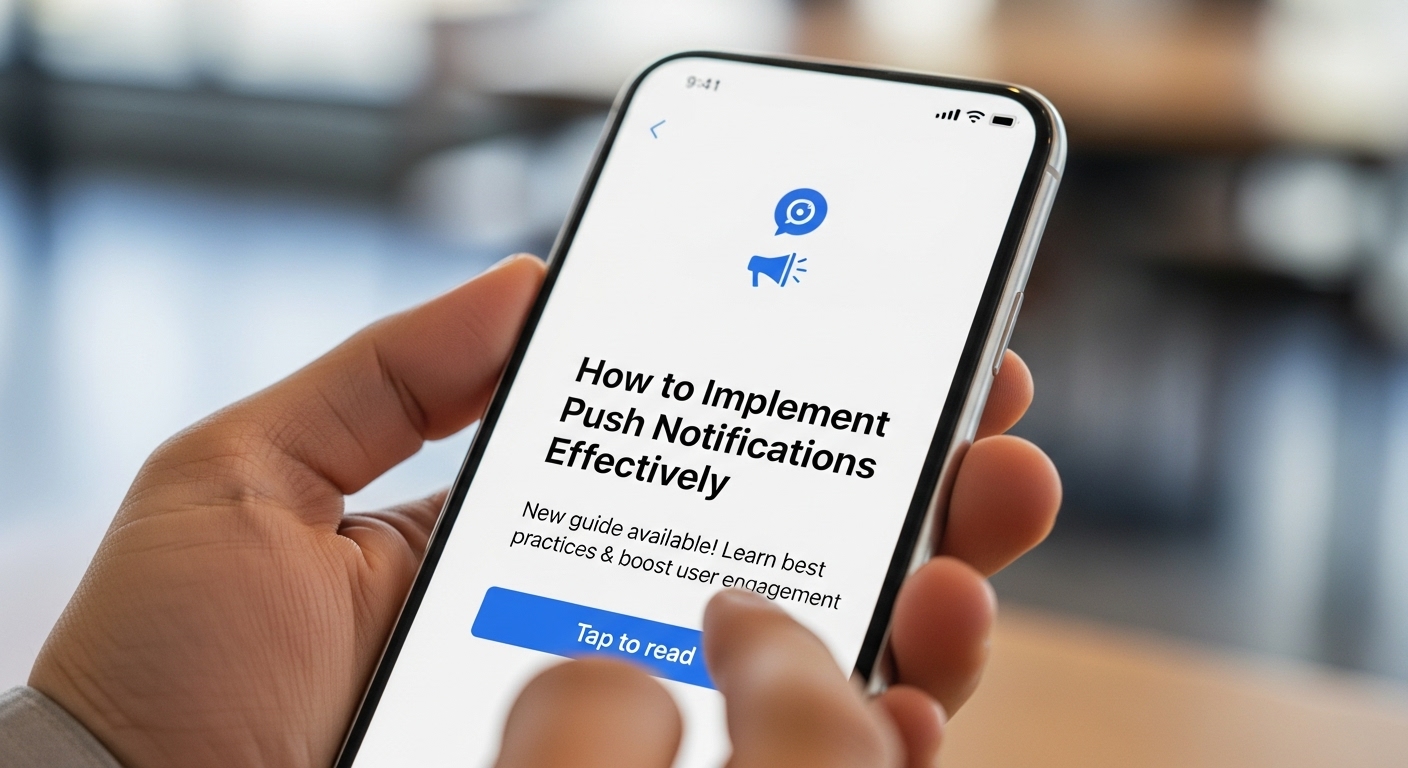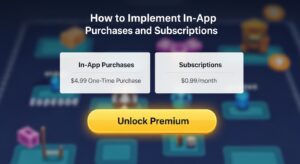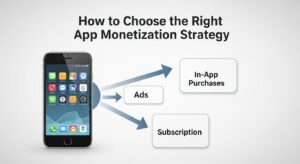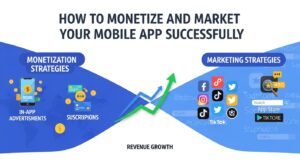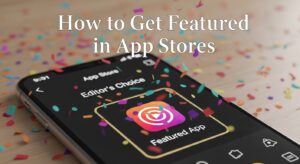Push notification implementation has become the cornerstone of successful mobile engagement strategies. When executed properly, these targeted messages can transform user behavior, drive conversions, and build lasting customer relationships.
Studies show that well-implemented push notifications can increase app engagement by up to 300% and boost retention rates significantly. However, poor push notifications often leads to user frustration, app uninstalls, and damaged brand reputation.
This comprehensive guide will walk you through proven strategies for effective push notification implementation that deliver measurable results.
Understanding Push Notification Implementation Fundamentals
Effective push notification implementation requires understanding three core components: timing, personalization, and value delivery. Each notification must serve a specific purpose while respecting user preferences and behavior patterns.
The foundation of successful push notification implementation lies in data-driven decision making. Before sending any notifications, analyze user behavior, engagement patterns, and conversion metrics to inform your strategy.
Types of Push Notifications
- Transactional Notifications These include order confirmations, shipping updates, and account security alerts. They typically achieve the highest engagement rates because users expect and value this information.
- Promotional Notifications Marketing messages about sales, new products, or special offers require careful push notification implementation to avoid overwhelming users.
- Behavioral Notifications Triggered by specific user actions or inactions, these notifications re-engage dormant users or encourage continued interaction.
Strategic Push Notification Framework
1. User Segmentation for Targeted Implementation
Successful push notification implementation begins with proper user segmentation. Divide your audience based on:
- Demographics and location
- Purchase history and preferences
- App usage patterns
- Engagement levels
- Device and platform preferences
Create detailed user personas to guide your push notification implementation strategy. This ensures each message resonates with its intended audience.
2. Timing Optimization
Timing significantly impacts notification effectiveness. Research shows that push notifications sent at optimal times can achieve 3x higher open rates compared to poorly timed messages.
Best Practices for Timing:
- Analyze user activity patterns
- Consider time zones for global audiences
- Avoid late night or early morning sends
- Test different timing strategies
Implement A/B testing to determine optimal send times for different user segments within your push notification implementation.
3. Personalization Strategies
Personalized push notifications perform 4x better than generic messages. Your push notification implementation should incorporate:
- User’s name and preferences
- Past purchase behavior
- Location-based content
- Dynamic content based on real-time data
Advanced personalization requires robust data collection and analysis capabilities integrated into your push notification implementation platform.
Technical Aspects
Choosing the Right Platform
Selecting appropriate tools is crucial for effective push notification implementation. Consider platforms that offer:
Feature | Importance | Examples |
Multi-platform support | High | Firebase, OneSignal |
Advanced segmentation | High | Braze, Airship |
Analytics and reporting | High | Mixpanel, Amplitude |
Automation capabilities | Medium | SendBird, Pusher |
A/B testing features | Medium | Optimizely, Leanplum |
Popular platforms for push notification implementation include Firebase Cloud Messaging, OneSignal, and Braze. Each offers unique advantages depending on your specific requirements.
Integration Best Practices
Proper technical integration ensures reliable push notification implementation. Key considerations include:
- SDK Integration Implement the chosen platform’s SDK correctly to avoid delivery issues. Follow platform-specific guidelines for iOS and Android implementations.
- Permission Handling Design user-friendly permission requests that clearly communicate the value of notifications. Poor permission implementation can significantly impact your opt-in rates.
- Error Handling Build robust error handling into your push notification implementation to manage failed deliveries, expired tokens, and platform-specific issues.
Content Creation
Crafting Compelling Messages
Your push notification implementation success depends heavily on message quality. Effective notifications share common characteristics:
- Clear and Concise Language Keep messages under 40 characters for optimal display across devices. Use action-oriented language that encourages immediate response.
- Strong Call-to-Action Every notification should include a clear next step. Whether it’s “Shop Now,” “Read More,” or “Complete Purchase,” make the desired action obvious.
- Value Proposition Immediately communicate the benefit to the user. Why should they open your app or take the suggested action?
Rich Media Integration
Modern push notification implementation supports rich media elements including:
- Images and GIFs
- Videos and interactive content
- Action buttons
- Custom sounds and badges
These elements can increase engagement rates by up to 56% when used appropriately in your push notification implementation strategy.
Automation and Workflow Implementation
Setting Up Automated Campaigns
Automation transforms your implementation from reactive to proactive. Common automated workflows include:
- Welcome Series New users receive a series of notifications introducing key features and encouraging initial engagement.
- Abandoned Cart Recovery E-commerce apps can recover up to 25% of abandoned carts through strategic notification sequences.
- Re-engagement Campaigns Dormant users receive targeted messages designed to bring them back to your app.
Trigger-Based Notifications
Implement notifications triggered by specific user behaviors or events. This approach ensures relevance and improves engagement rates within your push notification implementation. Examples include location-based offers, milestone celebrations, and activity reminders. These contextual messages feel natural and valuable to users.
Measuring Success
Key Performance Indicators
Track these essential metrics to evaluate your implementation effectiveness:
- Delivery Rates The percentage of notifications successfully delivered to devices. Industry average ranges from 85-95%.
- Open Rates Measures how many users tap on notifications. Rates vary by industry but typically range from 2-8%.
- Conversion Rates The percentage of users who complete desired actions after opening notifications. This is the ultimate measure of push notification implementation success.
- Unsubscribe Rates Monitor how many users disable notifications. High rates indicate poor implementation or irrelevant content.
Analytics and Optimization
Implement comprehensive tracking within your push notification implementation to identify improvement opportunities. Use tools like Google Analytics or Mixpanel to measure notification impact on user behavior and business metrics.
Regular analysis enables data-driven optimization of your push notification implementation strategy.
Advanced Techniques
Machine Learning Integration
Modern push notification implementation can leverage machine learning for:
- Predictive send time optimization
- Dynamic content personalization
- Churn prediction and prevention
- Automated A/B testing
These advanced techniques require sophisticated platforms but can dramatically improve results for larger organizations.
Cross-Channel Integration
Integrate push notifications with other communication channels for cohesive user experiences. Your push notification implementation should complement:
- Email marketing campaigns
- In-app messaging
- SMS communications
- Social media outreach
This omnichannel approach ensures consistent messaging and maximizes engagement opportunities.
Common Mistakes
- Frequency Overwhelm: The most common error in push notification implementation is sending too many messages. Research indicates that users receiving more than 3-5 notifications per week are 71% more likely to unsubscribe. Establish clear frequency guidelines based on user preferences and engagement patterns.
- Generic Messaging: Mass, untargeted notifications consistently underperform. Your push notification implementation must prioritize relevance over reach. Segment users appropriately and craft messages that speak to specific audience needs and interests.
- Poor Timing: Notifications sent at inconvenient times create negative user experiences. Study your audience’s behavior patterns and respect their daily routines in your push notification implementation.
Future Trends
- AI-Powered Personalization: Artificial intelligence will revolutionize push notification implementation by enabling hyper-personalized messaging at scale. Machine learning algorithms will predict optimal content, timing, and frequency for individual users.
- Interactive Notifications: Rich, interactive push notifications will become standard. Users will complete transactions, respond to surveys, and engage with content directly from notification panels.
- Privacy-First Implementation: As privacy regulations evolve, push notification implementation must balance personalization with user privacy. Transparent data practices and consent management will become increasingly important.
Conclusion
Effective push notification implementation requires strategic planning, technical expertise, and continuous optimization. Success depends on understanding your audience, delivering genuine value, and respecting user preferences.
Start with clear goals, implement proper segmentation, and focus on creating valuable user experiences. Monitor performance metrics closely and iterate based on data insights.

